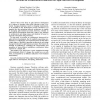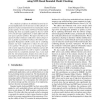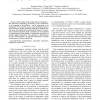ECBS
2010
IEEE
14 years 1 months ago
2010
IEEE
In classical data warehouses (DWH), classification of values takes place in a sharp manner, because of this true values cannot be measured and smooth transition between classes do...
ECBS
2010
IEEE
14 years 1 months ago
2010
IEEE
Software development and testing of Enterprise Resource Planning (ERP) systems demands dedicated methods to tackle its special features. As manual testing is not able to systematic...
ECBS
2010
IEEE
14 years 5 months ago
2010
IEEE
—One of the ideas of agile software development is to respond to changes rather than following a plan. Constantly changing businesses result in changing requirements, to be handl...
ECBS
2010
IEEE
14 years 6 months ago
2010
IEEE
Model-based selective regression testing promises reduction in cost and labour by selecting a subset of the test suite corresponding to the modifications after system evolution. H...
ECBS
2010
IEEE
14 years 6 months ago
2010
IEEE
Simple, stateless networking protocols provide a low-cost and predictable foundation upon which to build decentralised applications. Sensornets are complex, containing emergent be...
ECBS
2010
IEEE
14 years 7 months ago
2010
IEEE
The complexity of software in embedded systems has increased significantly over the last years so that software verification now plays an important role in ensuring the overall pr...
ECBS
2010
IEEE
14 years 8 months ago
2010
IEEE
Abstract—Many design steps during system development like functional partitioning, refactoring of the architecture, or the mapping to the platform - can be understood as an explo...
ECBS
2010
IEEE
14 years 8 months ago
2010
IEEE
—When engineering complex software systems, the key Architectural Design Decisions (ADD) and the reasoning underlying those decisions need to be fully understood by all stakehold...
ECBS
2010
IEEE
14 years 8 months ago
2010
IEEE
The Unified Modeling Language (UML) is the standard to specify the structure and behaviour of software systems. The created models are a constitutive part of the software speci�...
ECBS
2010
IEEE
14 years 10 months ago
2010
IEEE





